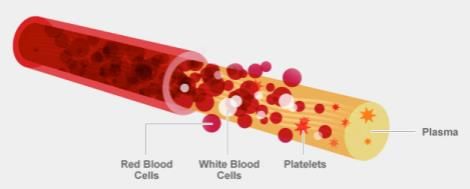NEET Exam > NEET Tests > Test: Blood & Lymph - NEET MCQ
Test: Blood & Lymph - NEET MCQ
Test Description
10 Questions MCQ Test - Test: Blood & Lymph
Test: Blood & Lymph for NEET 2025 is part of NEET preparation. The Test: Blood & Lymph questions and answers have been prepared
according to the NEET exam syllabus.The Test: Blood & Lymph MCQs are made for NEET 2025 Exam.
Find important definitions, questions, notes, meanings, examples, exercises, MCQs and online tests for Test: Blood & Lymph below.
Solutions of Test: Blood & Lymph questions in English are available as part of our course for NEET & Test: Blood & Lymph solutions in
Hindi for NEET course.
Download more important topics, notes, lectures and mock test series for NEET Exam by signing up for free. Attempt Test: Blood & Lymph | 10 questions in 10 minutes | Mock test for NEET preparation | Free important questions MCQ to study for NEET Exam | Download free PDF with solutions
Detailed Solution for Test: Blood & Lymph - Question 1
Detailed Solution for Test: Blood & Lymph - Question 2
Detailed Solution for Test: Blood & Lymph - Question 3
Detailed Solution for Test: Blood & Lymph - Question 4
Detailed Solution for Test: Blood & Lymph - Question 5
Detailed Solution for Test: Blood & Lymph - Question 6
Test: Blood & Lymph - Question 7
What is the fluid released into the spaces between the cells of tissues called?
Detailed Solution for Test: Blood & Lymph - Question 7
Detailed Solution for Test: Blood & Lymph - Question 8
Test: Blood & Lymph - Question 9
What potential health issue can arise from a significant reduction in platelet count?
Detailed Solution for Test: Blood & Lymph - Question 9
Test: Blood & Lymph - Question 10
What is the role of the lymphatic system in relation to interstitial fluid?
Detailed Solution for Test: Blood & Lymph - Question 10
Information about Test: Blood & Lymph Page
In this test you can find the Exam questions for Test: Blood & Lymph solved & explained in the simplest way possible.
Besides giving Questions and answers for Test: Blood & Lymph, EduRev gives you an ample number of Online tests for practice
Download as PDF




















